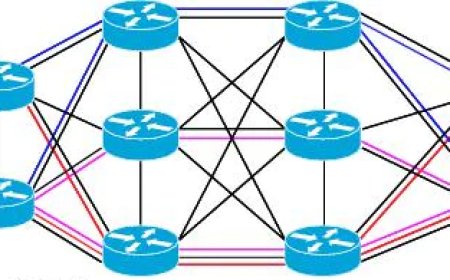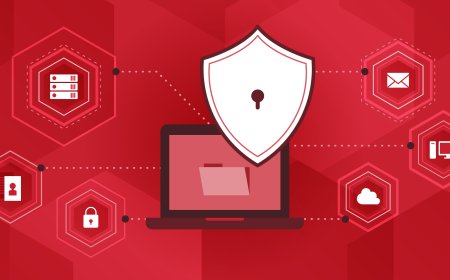Penetration Testing Explained
Penetration testing, also known as pen testing, is a method of evaluating the security of a computer system or network by simulating an attack by a malicious actor. The goal of penetration testing is to identify vulnerabilities and weaknesses in the target system and to assess the effectiveness of its security controls.

Penetration testing typically involves a combination of manual and automated techniques to identify, exploit, and report on vulnerabilities in the target system. The results of the penetration test are used to improve the security posture of the target system and to reduce the risk of successful attacks. Penetration testing is an important aspect of a comprehensive security program and is typically performed by security professionals or consultants with specialized skills and knowledge.
***** The most important thing to follow during a penetration test is to abide by the ethical and legal guidelines. This includes obtaining the necessary consent from the target organization and avoiding any actions that could cause harm to the target system or its users. Additionally, it is important to ensure that all information gathered during the pentest is properly documented and that any sensitive information is handled securely. *****
PHASES OF PENETRATION TESTING
1. Reconnaissance Phase:
The reconnaissance phase of penetration testing involves gathering information about the target system and network. This information can be used to identify potential vulnerabilities and plan the next stages of the test. The goal is to gather as much information as possible without being detected or causing harm to the target system.
Some methods that can be used during that phase:
- Open-source intelligence (OSINT) gathering: The process refers to the collection of information from publicly available sources, including the internet, news, media, databases, and other sources. OSINT gathering is the process of gathering information from open-source sources in order to support decision making, risk management, threat intelligence, and other activities.
The goal of OSINT gathering is to gather as much information as possible about a target, such as an individual, organization, or system, in order to support an investigation, threat assessment, or other activity. The information gathered during OSINT gathering may include publicly available data such as names, addresses, phone numbers, email addresses, social media profiles, job titles, and other details. The information can also include information about the target's activities, relationships, and potential vulnerabilities.
OSINT gathering is an important part of the reconnaissance phase in penetration testing, as it provides valuable information about the target that can be used to inform later phases of the test. OSINT gathering can also be used in other areas of information security, such as threat intelligence, incident response, and risk management.
- Network scanning: The technique used in penetration testing to gather information about a target network and identify potential vulnerabilities. The goal of network scanning is to map out the network infrastructure, identify active hosts and devices, and determine what services and protocols are in use.
Network scanning can be performed using various tools and techniques, including port scanning, ping sweeping, and vulnerability scanning. Port scanning is a technique that involves sending packets to various ports on a target system to determine which ports are open and listening. Ping sweeping is a technique that involves sending a series of ping requests to a range of IP addresses to identify active hosts on a network. Vulnerability scanning is a technique that involves using automated tools to scan a target system for known vulnerabilities and potential security weaknesses.
Network scanning is an important aspect of penetration testing, as it provides valuable information about the target network and potential vulnerabilities that can be exploited during later phases of the test.
-
Footprinting: The goal of footprinting is to gather as much information as possible about the target in order to support later phases of the penetration test.
Footprinting can be performed using various methods, including social engineering, searching the internet for publicly available information, and using tools and techniques to gather information about the target network and infrastructure. The information gathered during footprinting can include details about the target's IP addresses, domain names, network infrastructure, technologies in use, and other details.
Footprinting is an important part of the reconnaissance phase in penetration testing, as it provides valuable information about the target that can be used to inform later phases of the test.
-
Social engineering: It is used to manipulate individuals into divulging confidential information or performing actions that compromise security. Social engineering attacks rely on human interaction and often involve tricking people into revealing sensitive information or performing actions that compromise security.
Social engineering attacks can take many forms, including phishing attacks, baiting, tailgating, and pretexting. Phishing attacks involve tricking individuals into revealing sensitive information through the use of fake emails, websites, or other means. Baiting involves leaving a physical item, such as a USB drive, in a place where it is likely to be found and picked up by a target, with the goal of compromising their system. Tailgating involves following someone into a secure area without proper authorization. Pretexting involves creating a false scenario to trick an individual into revealing sensitive information.
Social engineering is an important part of the gaining access phase in penetration testing, as it allows testers to assess the security awareness of an organization and its employees.
2. Enumeration and Scanning Phase:
This phase involves using tools to identify open ports, services, and vulnerabilities on the target system. The goal is to gather as much information as possible about the target system to facilitate further exploitation and compromise.
These methods can be used during this phase:
- Port scanning: Helps to identify open ports and services on a target system. The goal of port scanning is to map out the network infrastructure and identify what services are running on a target system, as well as determine which ports are open and listening.
Port scanning can be performed using various tools, such as nmap, to send packets to specific ports on a target system and determine which ports respond. The responses from the target system can be used to determine what services are running on the system and identify potential vulnerabilities that can be exploited.
It is an important aspect of the enumeration and scanning phase in penetration testing, as it provides valuable information about the target system and potential vulnerabilities that can be exploited during later phases of the test.
-
Vulnerability scanning: Helps to identify potential security weaknesses or vulnerabilities in a target system or network. The goal of vulnerability scanning is to identify and assess known security vulnerabilities and potential exploits in a target system.
Vulnerability scanning is performed using automated tools, such as Nessus, OpenVAS, or Qualys, that scan a target system for known vulnerabilities. These tools compare the results of the scan to a database of known vulnerabilities and security issues, and generate a report detailing any potential exploits or weaknesses that are found.
Vulnerability scanning is an important aspect of the enumeration and scanning phase in penetration testing, as it provides valuable information about potential vulnerabilities that can be exploited during later phases of the test.
-
Service scanning: The goal of service scanning is to map out the target system and identify the services and applications that are running on it, as well as the versions and configurations of those services and applications.
Service scanning can be performed using various tools, such as nmap, that send packets to specific ports on a target system and determine which services are running on those ports. The responses from the target system can be used to determine what services are running on the system and identify potential vulnerabilities that can be exploited.
-
Banner grabbing: The goal is to identify the type of software, its version number, and the operating system running on a target system by capturing the banner or header information that the service sends in response to incoming requests.
The best way to identify open ports, services, and vulnerabilities will depend on the specific objectives and constraints of the penetration test. However, some of the most popular and effective tools for this phase include Nmap, Nessus, and OpenVAS.
3. Gaining Access:
The phase involves exploiting vulnerabilities to gain access to the target system. The goal is to demonstrate the potential consequences of an actual attack and to evaluate the effectiveness of the target system's security measures.
Some methods that can be used during this phase:
- Exploit execution: The main aim is to take advantage of vulnerabilities or weaknesses in a target system or network. The goal of exploit execution is to gain unauthorized access to the target system and demonstrate the real-world impact of the vulnerability.
Exploit execution is performed using various tools, such as Metasploit, that automate the process of exploiting a vulnerability. These tools typically have pre-written exploits for known vulnerabilities, which can be used to gain access to the target system. The success of exploit execution is dependent on the availability of a suitable exploit and the specific configuration of the target system.
- Password attacks: Password attacks are a type of attack in which an attacker attempts to gain unauthorized access to a system or network by guessing or cracking passwords used for authentication. There are several different types of password attacks, including:
-
Brute force attack: A brute force attack involves systematically trying every possible combination of characters until the correct password is found.
-
Dictionary attack: A dictionary attack involves using a list of commonly used words and phrases as potential passwords, and testing each one until the correct password is found.
-
Hybrid attack: A hybrid attack combines elements of a brute force and dictionary attack, by starting with a list of commonly used words and phrases, and then adding additional characters to each word until the correct password is found.
-
Rainbow table attack: A rainbow table attack involves precomputing the hashes of a large number of possible passwords, and then comparing those hashes to the hashes of passwords stored on the target system.
-
Social engineering attack: A social engineering attack involves tricking or misleading someone into revealing their password, or into allowing an attacker to reset their password.
Password attacks are a common form of attack in penetration testing, and can be used to gain unauthorized access to a system or network. Password attacks should be performed in a controlled and ethical manner, and the results should be used only for the purpose of improving the security of the target system.
-
4. Maintaining Access:
The main aim is to ensure accessing to the target system can be sustained even after a reboot or other interruption. The goal is to evaluate the target system's ability to detect and respond to a compromise, and to demonstrate the potential consequences of a persistent attack.
Some methods that can be used during the phase:
-
Backdoor creation: Aim is to establish a hidden means of accessing a system or network that bypasses normal authentication and authorization mechanisms. The goal of backdoor creation is to provide a persistent means of accessing the target system or network, even if other means of access are blocked or removed.
Backdoor creation is typically performed by exploiting vulnerabilities in the target system or network, or by installing malware or other malicious software on the target system. The backdoor can be used to remotely access the target system or network, and can be difficult to detect and remove.
Backdoor creation is an important aspect of the maintaining access phase in penetration testing, as it provides a means of accessing the target system or network if other means of access are blocked or removed. Backdoor creation should be performed in a controlled and ethical manner, and the results should be used only for the purpose of improving the security of the target system.
-
Privilege escalation: The main aim is to gain higher level access or privileges on a system or network. The goal of privilege escalation is to take advantage of vulnerabilities or weaknesses in a system or network to gain unauthorized access to sensitive or restricted resources. There are several different types of privilege escalation, including:
-
Vertical privilege escalation: Aims gaining higher level access within the same system or network, such as from a standard user account to an administrative account.
-
Horizontal privilege escalation: Aims gaining access to resources or systems that are not normally accessible from the current system or network, such as accessing a sensitive database from a less secure system.
-
Exploit-based privilege escalation: Aims taking advantage of a vulnerability in a system or network to gain higher level access.
-
-
Rootkit deployment: Process of installing a type of malware known as a rootkit on a target system. A rootkit is a type of malicious software that is designed to hide the presence of other malware on a system, as well as hide the activities of the attacker.
The goal of rootkit deployment is to establish a persistent means of accessing and controlling the target system, even if other means of access are blocked or removed. Rootkits can be difficult to detect, as they often use sophisticated techniques to hide their presence, such as modifying the system's kernel or modifying system libraries.
5. Covering Tracks:
The covering tracks phase involves hiding the presence of the attacker and their activities on the target system. The goal is to evaluate the target system's ability to detect a compromise and to demonstrate the potential consequences of a stealthy attack.
Methods that can be used during the covering track:
-
Clearing logs: The process of removing or modifying log entries that might reveal the attacker's presence or activities.
-
Hiding files: The process of hiding or disguising the files and tools used during the attack in order to cover the tracks.
-
Disabling auditing: Involves turning off or modifying auditing mechanisms that might reveal the attacker's presence or activities.
6. Reporting Phase:
This phase involves documenting and communicating the results of the penetration test to the target organization. The goal is to provide a comprehensive and actionable report that can be used to improve the security of the target system.
Some steps that can be taken during the phase:
-
Compiling findings: Involves collecting and organizing all the data and information gathered during the reconnaissance, enumeration and scanning, gaining access, maintaining access, and covering tracks phases.
-
Prioritizing findings: The process of evaluating the potential impact and risk of each finding and prioritizing them based on severity and likelihood.
-
Writing the report: Ptocess involves documenting the findings, conclusions, and recommendations in a clear, concise, and easy-to-understand format. The report should include details on the scope of the test, methodology used, findings, and any recommendations for remediation.
-
Reviewing the report: This involves reviewing the report for accuracy, completeness, and clarity. The report should be reviewed by all relevant stakeholders, including the penetration tester, the target organization, and any other relevant parties.
TOOLS TO BE USED DURING TESTING
-
Reconnaissance: Tools such as Whois, Nslookup, Dig, and Google Hacking can be used to gather information about the target system or network.
-
Scanning: Tools such as Nmap, Nessus, and OpenVAS can be used to identify open ports, services, and vulnerabilities on the target system or network.
-
Gaining: Tools such as Metasploit, Core Impact, and Canvas can be used to exploit vulnerabilities on the target system or network.
-
Maintaining Access: Tools such as Netcat, Backdoor Factory, and Meterpreter can be used to maintain access to the target system or network.
-
Covering Tracks: Tools such as rootkit detectors and file wiping tools can be used to cover the tracks of the attacker after accessing the target system or network.
-
Reporting: Tools such as Dradis, Nessus, and OpenVAS can be used to create and prepare reports after the phases of penetration testing.
***** Specific tools used during a penetration test will depend on :
- The scope of the test,
- The target system or network,
- The specific goals of the test
What's Your Reaction?

























